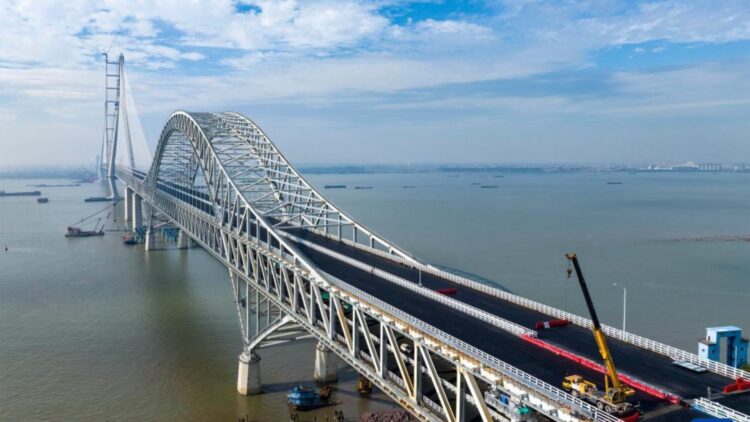China has done it again: although it can hurt our ego deeply, this country is at its peak. The biggest Asian country has just opened the Changtai Yangtze River Bridge, which connects Changzhou and Taizhou over the Yangtze River.
This bridge spans more than 10 km (10.03 km to be exact). Of these, 208 m are cable-stayed, setting a world record. Thanks to this titanic feat of engineering, travel time has been reduced from 80 minutes to just 20 minutes, boosting integration in the delta. It is a dream come true for those who have to travel long distances every day to get to work.
From the creators of “The Great Wall”
We already know that the Chinese are very fond of doing everything on a grand scale. This bridge is located in Jiangsu Province (eastern China), over the Yangtze River. It connects two emerging industrial hubs within the river’s economic corridor. This means a boom in logistics flow, attracting investment and metropolitan mobility for the entire population of the area.
Thanks to its combination of road and rail in a single structure, this bridge breaks records for its total length (approximately 6.2 miles) and for having more than 1 mile of cable-stayed structure.
Not only is it one of the longest bridges on the planet, it also has different levels: the upper level has a six-lane highway with a speed limit of approximately 62 mph. On the lower level, there is a four-lane highway with an intercity railway line. Trains traveling on this line can reach speeds of up to 200 km/h, depending on the route. To achieve this marvel of engineering, an asymmetrical design was used on the lower level with fine tension control to balance the loads.
To achieve this, towers measuring 350 m made entirely of steel and concrete were constructed. After approximately six years of construction, it was opened on September 9, 2025. This is the first bridge to cross the Jansen that integrates a highway, local road, and train within the same structure.
Chinese construction
To lay a secure foundation for the bridge, the construction company placed steel caissons in the riverbed to work in dry conditions despite the strong currents. Smart cranes were used to achieve millimeter precision. In addition, the cables were tensioned in phases to compensate for the imbalance at the lower level. Joints without long-term corrosion protection were also used. All in all, they have achieved an engineering feat that will be the pride of generations to come.
How the Changtai Yangtze River Bridge will affect the area
This new bridge improves daily mobility throughout the area. Travel times will be shorter and more predictable. Economic activity will also benefit greatly: after all, more direct routes for freight mean fewer detours and therefore lower transportation and fuel costs.
The tertiary sector of services and tourism will also be positively affected, as regional travel will ultimately be easier without so many traffic jams. The Yangtze Delta is one of the country’s most important economic engines, so this bridge is a safe bet to improve the prosperity of the entire region, and therefore the country.
And it’s no wonder: according to some studies, approximately 235 million people live in this delta. The Yangtze Delta region covers parts of Shanghai, southern Jiangsu, northern Zhejiang, and southern Anhui.
In Jiangsu (the province where Changzhou and Taizhou are located), the main pillars of industry are electronics, machinery, chemicals, automobiles, and metal casting. In general, the Delta region is transitioning towards high-tech industries: semiconductors, strategic industries, and new materials. Approximately half of the country’s integrated circuit industry is concentrated in this Delta alone.

